How to get rid of mold in the washing machine with improvised means at home
Sometimes, after washing, instead of a pleasant smell of freshness, it is clear that the mustyness of the linen came from somewhere, and as a result of the examination of the electronic assistant, dark, slippery to the touch, convex spots are found in some areas.
Many users of the washing machine are worried about the question: when mold appeared in the washing machine, how to get rid of it forever?
The content of the article:
What is mold and why is it dangerous?
Mold spots are colonies of very small fungi. If you look at them through the lens of a microscope, you can see the filaments (mycelium) and thickenings at their ends (spores). The latter are separated from the mother's body and ply with air flow.
Mold spores can be found both outdoors and indoors. Lurking and not showing themselves in any way, they are waiting in the wings.
When favorable conditions, such as high humidity and heat, spores germinate quickly. As a result, colonies are formed, which are dark spots on any objects.

In nature, mold lives almost everywhere. These fungi play a very important role in the circulation of substances, helping to utilize organic residues.
But man has learned to synthesize a medicine from them, on the account of which there are millions of saved lives.
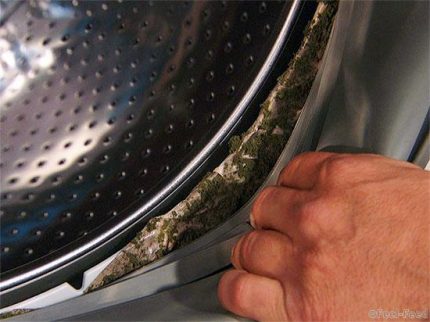
Mold emits a special toxic substance - mycotoxin. Penetrating into the human body in various ways, it causes the following symptoms:
- skin contact - irritation and itching;
- getting into the respiratory system - cough and shortness of breath;
- penetrating the gastrointestinal tract and disrupting the normal microflora present there - bloating, diarrhea, constipation;
- absorbed into the bloodstream and entering the nerve cells - weakening of attention and memory.
Therefore, if colonies are found in the house, they should be immediately destroyed.
Causes of mold in the washer
The reasons for populating the mold of a washing machine are many. But almost always the owners of the aggregate who are not observing the rules for caring for household appliances are to blame for the increased reproduction of the fungus.
Reason # 1 - installation in the wrong place
As already mentioned above, mold can grow and multiply intensively only in appropriate conditions. Ideally, this is 90% humidity and +20 ° C temperature. Small deviations from these indicators are also quite acceptable for microscopic fungi.
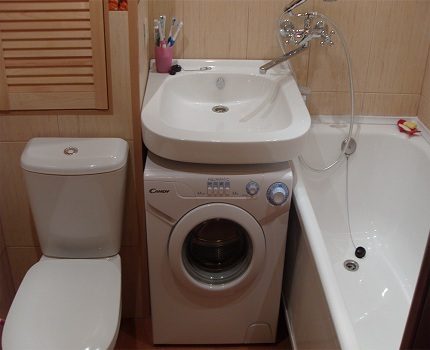
In a person’s home, such conditions are maintained year-round in the bathroom, so installing a washing machine here is highly undesirable.
For this purpose, a kitchen or corridor is more suitable. If there is no choice and installation is possible only in the bathroom, you should definitely take care of good ventilation.
Reason # 2 - permanently closed door
After the wash is finished and the laundry is taken out of the drum, very often the hosts tightly close the door to the loading door. The same applies to the powder filling tank.
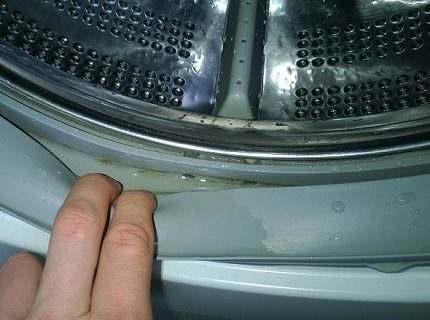
As a result, the water droplets remaining after washing inside the machine form excellent conditions for the life of molds.
At the end of washing in the folds of the rubber cuff, which acts as a seal for the door, almost always some water remains. Gradually, it will evaporate, which is guaranteed to provide high humidity inside the machine. This is exactly what mold spores require for rapid development.
Reason # 3 - low temperature wash
In order to save electricity, the owners constantly wash in slightly heated water. This is fraught with the fact that the nodes of the washing machine are not disinfected by high temperature.
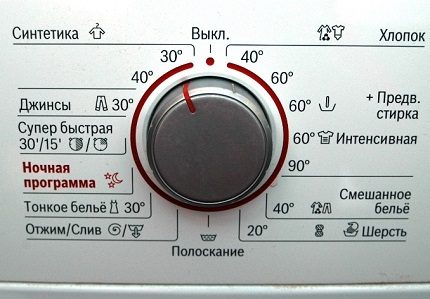
Reason # 4 - improper use of detergents
In particular, we are talking about powder use without bleach. Bleaching additives in washing powders not only restore their original appearance to light things, but are also disinfectants capable of defeating a harmful fungus.
In this case, it is not necessary to constantly use these detergents. It is enough to alternate after 3-4 washings with ordinary powder.
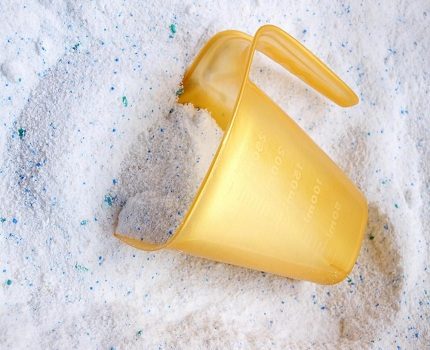
She is also a possible reason - improper washing with rinse aid. When washing using an air conditioner, an additional rinse must be set.
If this is not done, again in order to save money or simply by ignorance, the rinse aid particles remain on the door, in the folds of the rubber cuff, on the drum net and the walls of the tank. This culture medium is great for mildew.
Reason # 4 - connectivity issues
Mold of the washing machine can be triggered by improper connection to the sewer. As a result, the water is drained incorrectly and some part of it remains inside the machine.
Stagnant dirty water is the best contributor to the development of mold colonies.
We recommend reading our other article, where we described the process in detail. connect the washer to communications.
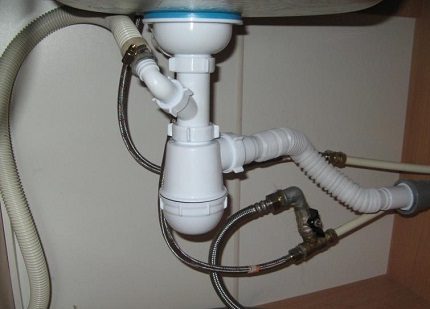
Homemade Mold Removal Techniques
Before you engage in the "rescue" of the washing unit, you need to understand what fungi do not like.
And they do not like the following:
- acidic environment;
- aggressive alkalis;
- high temperatures;
- dry surface.
Based on these indicators, you can always find the best tool, after applying which the mold will go away once and for all.
Method # 1 - Citric Acid Purification
This method is considered effective in the case when obvious traces of mold in the machine are not visible, but at the same time a musty smell is constantly felt. That is, when microscopic fungi have not yet had time to thoroughly settle in the aggregate.

Perform it like this:
- Thoroughly wash and dry the compartment intended for filling the powder.
- Insert the tray back into the machine and fill it with citric acid. 200 g of substance are sufficient for cleaning.
- On the control panel set one of the washing programs, which provides for the use of water at the highest temperature.
- Launch the idle wash.
- At the end of the program, thoroughly wipe with a dry cloth all available machine components.
- The door and powder compartment are left ajar. So the car is well ventilated.
Citric Acid Method can be used for preventive purposes. To do this, once every 4-6 months, you need to expose the technique to the described procedure.
Method # 2 - Cleaning the Machine with Vinegar
Vinegar works on the same principle as citric acid. But the process of cleaning the device with this substance has some differences.
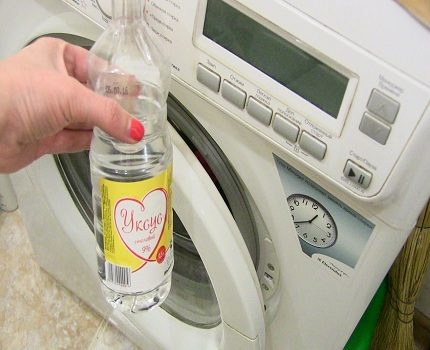
The technique is performed as follows:
- Half a glass of 9% acetic acid solution, which can be purchased at almost every grocery store, is poured into the powder compartment.
- On the control panel, select the longest program with the maximum temperature.
- Launch the wash.
- After the water in the washing machine heats well, they pause and wait an hour and a half.
- After a lapse of time, the appliance is restarted to complete the wash.
- A solution is made in a separate bowl: 50 ml of 9% vinegar is adjusted to 100 ml with water. This liquid is wiped on all available surfaces of the washing machine.
- Choose the shortest program. Launch her.
An additional wash will help remove acid residues from the unit. After washing, wipe the car thoroughly, almost dry.
Using the described technique in the washing machine, you can eliminate not only mold, but also scale. Moreover, it should be used precisely 9% vinegar solution.Higher acid concentrations can damage the components.
Method # 3 - use of “White” and “Domestos”
If there is a lot of mold in the car, which can be judged by the numerous dark spots, household products are used that are used to disinfect and clean the sinks and toilets from dirt.
This is known to our grandmothers "Whiteness" and later chlorine-containing drugs, for example, "Domestos".
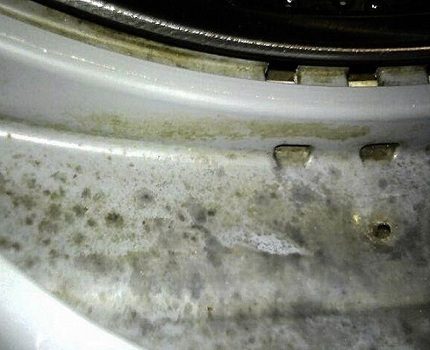
With their help, the machine is freed from mold like this:
- Choose the longest time program with high temperature conditions.
- Pour 1 liter of White or a similar product into the powder compartment.
- Start the cycle idle.
- When the water in the car warms up well, the washing is stopped for 1-1.5 hours.
- Run the program again.
- After the wash is completed, 2 tbsp. Are poured into the powder compartment. vinegar or fall asleep 200 g of citric acid.
- The rinse cycle is set on the control panel. Launch.
At the end, wipe all accessible knots well with a soft, dry rag.
Chlorine is a toxic substance, and its smell is not pleasant. Therefore, after such cleaning of the washing machine, the room in which the unit is installed should be thoroughly ventilated.
Method # 4 - processing the machine with copper sulfate
Copper sulphate or vitriol - a tool that has been successfully used in agriculture to combat plant diseases that cause fungi. You can find it in specialized gardening stores.
In appearance, these are small crystals of blue color. It can also be used as a mold cleaner. It should be borne in mind that vitriol is a strong poison, so you need to work with it very carefully.
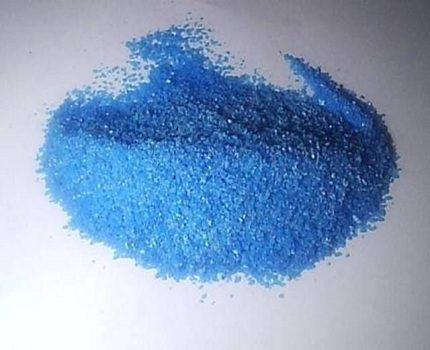
The treatment of the machine with copper sulfate is carried out as follows:
- A solution is prepared, for which 50 g of powder is poured into a suitable container and the volume is adjusted to 5 l.
- Wearing small rubber gloves on your hands, use a sponge to apply the product on moldy areas. Most often it is a cuff, a drum and a container for filling powder.
- In this form, the machine is left for 3-4 hours.
- Close the hatch door and start the rinse program.
After the procedure, the device is well ventilated. The method of treatment with copper sulfate is more suitable for cleaning heavily moldy components of the washing machine.
Method # 5 - Soda Ash Brush
With this low-cost detergent, the washing machine can be cleaned well and rid of unpleasant odors.
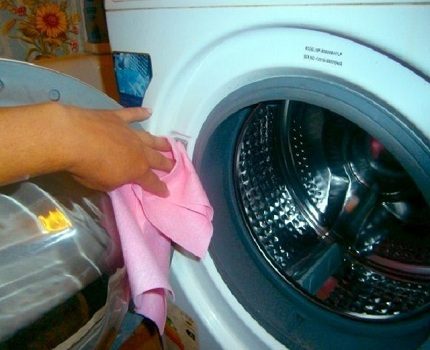
Cleaning with soda ash is carried out according to the following points:
- Soda powder is mixed with water in a ratio of 1: 1.
- The resulting mixture is applied with a sponge to accessible parts of the machine: drum, rubber cuff, door.
- Wipe well with soda the compartment into which detergents are loaded.
- Leave the tool to act for an hour and a half.
- Over time, soda ash, along with mold and dirt, is removed with a damp sponge.
- Turn on the machine in quick wash mode.
After the unit executes the program, all nodes are well wiped with a dry rag. Instead of calcined powder, ordinary baking soda can be used, but in this case, the cleaning efficiency will be less.
How to clean individual nodes?
Very often colonies of molds settle on a rubber cuff and in the powder filling compartment. To get rid of them, you need to thoroughly work on problem areas.
Cuff mold removal
Under the cuff, which serves as a seal for the loading door, dirt and water often accumulate in its folds. In the case of mold, wiping with rags from the outside, even with the use of appropriate chemistry, is not enough.
The following actions will be most effective:
- Having picked up with a tool, such as a screwdriver, a wire clamp and leading it in a circle, very carefully so as not to damage the rubber, remove the cuff.
- The item is washed well in a large container with water, detergent and bleach.
- A sponge soaked in a chlorine-containing solution wipes the drum and door well.
The removed part is returned back only after all the nodes have dried. The mycelium of molds can grow quite deeply into the rubber, so it is not always possible to completely wash the cuff.
In such cases, the situation can only be corrected. damaged rubber replacement to a new one.

Nuances of cleaning the powder receptacle
The tray intended for receiving detergents, as well as rinses, can be called the "dirty place" of the washing machine.
In addition, there is almost always some water left in it after the end of the program. Therefore, the compartment is a favorite place for the settlement of mold colonies.
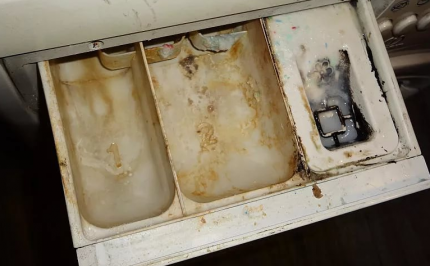
If mold appears in the powder receptacle, clean it like this:
- The tray is removed from the machine and washed well under hot water.
- Warm water is poured into a suitable container and one of the chemicals is added there: White, Domestos, Toilet duckling, Silite.
- Soak the compartment in the resulting solution for several hours.
- Over time, the tray is removed and thoroughly washed with a brush and rags alternately.
- Well washed with clean water.
- It is dried in air and then returned to its place.
If the tray has subtle traces of mold, then clean it well enough with a brush under hot water. The drain filter, in which mold is often found, is cleaned in the same way.
Fungal Prevention
To avoid mold in the washing machine, you should regularly follow the simple rules of prevention:
- Even for a couple of hours, do not leave already washed laundry out of the tank. If it is not possible to immediately hang, then it is better to take it out into the basin.
- Once every 20-30 days, you must wash it in a long program with a high temperature. In this case, it is mandatory to use a powder with bleach as a detergent.
- In the period from 3 to 6 months, you should start washing without laundry at high temperature with the addition of vinegar or citric acid into the water. This will destroy mold that has not yet sprouted.
- You should not often use various conditioners and fabric softeners. Their particles remain on the walls and contribute to the development of microscopic fungi.
- Periodically need to be thoroughly cleaned. drain filter and a hose through which water from the machine enters the sewer.
After each washing, it is imperative to dry the rubber cuff and drum with a cloth.
It is better to remove the powder receiver from the machine and thoroughly dry it in air. The door to the load door should always be ajar.
Compliance with the above rules will not allow mold to settle inside the washing machine. As a result, the home assistant will work for a long time, properly and will not harm the health of family members.
Conclusions and useful video on the topic
The tips of users who have already tried various methods of cleaning the machine from mold will help to understand some of the nuances of the process.
Useful information from the experience of cleaning the washing machine:
How to care for a washing machine, an experienced housewife will tell:
Simple rules of prevention and timely cleaning will be a reliable protection of the washing machine from extremely unwanted settlers - mold fungi.
If the problem made itself felt, then, armed with the proposed methods and regularly conducting preventive cleaning the washer, it will be much easier to handle.
Perhaps you know other effective methods for eliminating mold in a washing machine and are successfully applying them? Please tell our readers about them - leave your comments, ask questions in the block below.

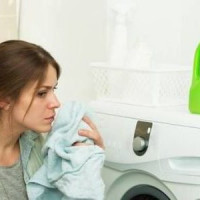 Unpleasant odor in the washing machine: causes of odor and methods for eliminating it
Unpleasant odor in the washing machine: causes of odor and methods for eliminating it 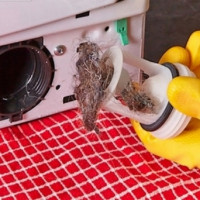 How to clean a filter in a washing machine: an overview of best practices
How to clean a filter in a washing machine: an overview of best practices  How to clean the drum in the washing machine: sequence of steps
How to clean the drum in the washing machine: sequence of steps  Where to put powder in the washing machine and how much powder to pour: balance of efficiency and economy
Where to put powder in the washing machine and how much powder to pour: balance of efficiency and economy 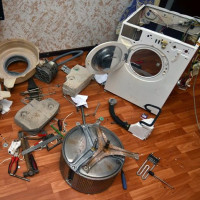 Replacing the bearing in the washing machine: how to change the bearing yourself and not make mistakes
Replacing the bearing in the washing machine: how to change the bearing yourself and not make mistakes 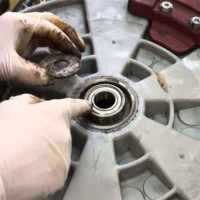 How to exchange bearings on an Indesit washing machine: step-by-step instruction
How to exchange bearings on an Indesit washing machine: step-by-step instruction  How much does it cost to connect gas to a private house: the price of organizing gas supply
How much does it cost to connect gas to a private house: the price of organizing gas supply  The best washing machines with dryer: model rating and customer tips
The best washing machines with dryer: model rating and customer tips  What is the color temperature of light and the nuances of choosing the temperature of the lamps to suit your needs
What is the color temperature of light and the nuances of choosing the temperature of the lamps to suit your needs  Replacement of a geyser in an apartment: replacement paperwork + basic norms and requirements
Replacement of a geyser in an apartment: replacement paperwork + basic norms and requirements
When the car is brand new, it is so pretty! Clean, shiny, odorless. I had to change the car, and at first you put the laundry in it with great pleasure. It comes out perfectly clean and fresh. I prefer to clean the machine with soda ash. I’m somehow afraid to use tools like “Domestos”, but it seems to me of little help from citric acid.
And rightly so. Domestos is an aggressive cleaner with chlorine content, manufacturers do not recommend their use. Harmful to the “insides” of the washer.
Hello. Domestos is not intended for cleaning washing machines, but it can be used to cleanly feed the tray, disconnected from the general structure. I am for specialized products, but the lemon really cleans well.
We bought a used washing machine from the guys in the service center after the repair. In general, her condition was not bad, they gave her a guarantee. When they brought us, the question was how to wash it, because there was mold on the rubber band, and the smell was stale, the door had not been opened for a long time. They washed everything with vinegar, partially removed. There is still a good way to get rid of odors and mold: this is to start the program 90 degrees with citric acid (a couple of packs will be enough). He helped us, the machine is now as good as new and odorless.
We also got mold, right on the rim. We were able to get rid of it, but when the last time was the master, he warned that we should try not to wash at 30 degrees. Since then, they switched to 60, like the mold no longer appeared. They bought some other remedy for the smell in the car. I don’t remember which one, but everything has passed since then. It is necessary not to start the car, because mold may appear inside, where it is impossible to get it yourself and you will have to spend a lot of money on calling the master and cleaning the machine. Well, or even buy a new one.